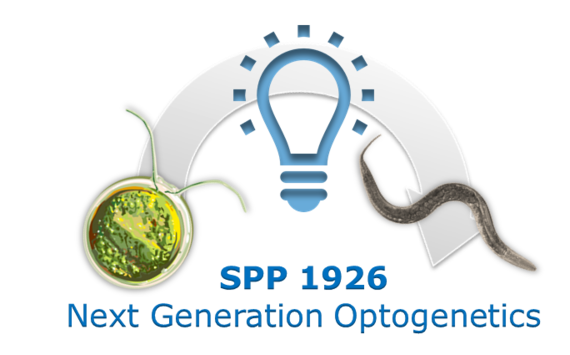is a collective term for methodology that utilizes light-sensitive proteins (harvested from nature, or engineered), or light-switchable chemical compounds (that can modify proteins), in cells or organisms, to render cellular processes controllable by light, or to make them visible. This can extend to the control of neurons in animals, thus evoking or inhibiting neuronal activity, and even affecting animal behavior. Optogenetic methods were first introduced in 2005, and initially led to a revolution in neurosciences. In more recent years, it also expanded to the field of cell biology. The success and broad potential of the approach sparked an interest in development of novel optogenetic tools with more specific properties and for ever increasing applications, in basic science, but potentially also for applications in human therapy.
Optogenetics
The DFG Priority Programme SPP 1926 aims to generate novel optogenetic tools, for application in Neuro- and Cell Biology. The SPP 1926 was approved in 2015, and projects were chosen for funding in the spring of 2016. 13 Projects, most of them collaborative, comprise a total of 27 labs which will jointly form the SPP 1926 for the coming 3 years. The SPP is organized by a Steering Committee (Soojin Ryu, Mainz; Ilka Diester, Freiburg; Andreas Möglich, Bayreuth; Stefan Herlitze, Bochum; Franziska Schneider, Freiburg; Jan Jikeli, Bonn), the speaker is Alexander Gottschalk, Frankfurt.


Our idea and mission
In recent years, optogenetics revolutionized research in neuroscience and is now transforming also cell biology. Genetically encoded or addressable, light-controlled proteins or molecules are introduced in heterologous cells, tissue or whole animals to enable temporally precise and largely non-invasive control of molecular, cellular, or network activities.
We will:
Generate and implemente novel optogenetic concepts and tools, particularly combined optogenetic systems
Harness cell-intrinsic signaling cascades and amplification mechanisms
Make intracellular compartments and organelles accessible to optogenetic intervention
Generate novel combinations of optically triggered domains with other functionalities, thus making them photo-switchable
Implement these tools in animal models
Use these tools for exciting biology
